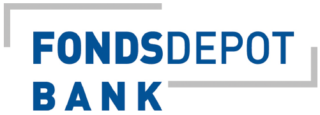Orchestra IT
Platform for Management- and IT-Systems
Orchestra designs
efficient processes in the IT
Orchestra connects your management and IT systems. With the low-code platform, you design efficient software architectures and automate the exchange of information between the players involved. This allows personnel to concentrate on their core competencies, and reduces error-proneness as well as costs. In addition, Orchestra efficiently connects your store floor.
Smart Process Solutions
Plug & Play
Mappings
Information has value, data has cost. Orchestra Mappings transform data into a semantic model that is interpreted by the respective business applications (ERP, MES). This interpretation is equivalent to an information gain. With Orchestra you transform data in several ways. With the XSLT mapping you create dynamic websites or forms for user interactions, with the patch and dispatch mappings you automatically create proprietary application formats, for example for SAP, and with the Orchestra mappings you create and transform application-specific message structures. With the graphical mapping, this can be done completely without code. The JSON mapping combines JSON expressions with Java code and the Java mapping combines XML-XPath expressions with Java code. This way, any required structure can be created efficiently.
Best of Breed
As an independent software manufacturer, we believe that different companies are leaders in different areas depending on the application and the target. Which ones are, depends very much on your use case. We adapt and offer channels or connectors to common open source systems, protocols and formats such as REST, OPC-UA, XML or JSON but at the same time also to proven proprietary solutions such as SAP ERP, Microsoft Excel or the Siemens programmable logic controller S7.
Data Sovereignty
Become the conductor of your data: The low-code platform Orchestra is a data hub, not an octopus. You decide which systems receive which data. Orchestra distributes it, encrypted and redacted as needed. Through multiple deployments in regulated markets, our company is certified and our solution compliant with the most stringent standards, such as Good Manufacturing Practice.
Privacy and Security
Your data is your capital. Our encryption mechanisms protect sensitive data, such as industrial data or intellectual property, from unauthorized access. Central monitoring and transparent processes ensure maximum data security.
References
Central platform for secure data transmission

References
Fondsdepot Bank GmbH is an independent specialist in customized solutions for all aspects of the custody business and has been providing competent investment custody services for over 20 years with around 450 experts. soffico GmbH supports the German bank in connecting its sales force depot, a CRM system. Here, successful data mapping plays a central, profitable role. Orchestra is also used to transfer data for information retrieval. To support large volumes of data, files are streamed as needed.
Technical advantages
Rica Holzmann

